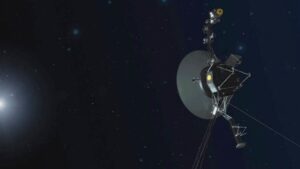
Orionid Meteor Shower: A Celestial Spectacle to Illuminate November Nights
As the month of November unfolds, stargazers can look forward to one of the most stunning celestial events of the year: the Orionid meteor shower. Known for its breathtaking display of shooting stars, this meteor shower is set to grace the night sky well into the latter half of the month.
Peak Viewing Time and Meteor Characteristics
According to NASA, the Orionid meteor shower reaches its peak in mid-October, but its dazzling meteors will remain visible until November 22. These meteors are particularly notable for their remarkable brightness and speed, making them a favorite among astronomy enthusiasts.
Visibility for the shooting stars depends heavily on weather conditions. A bright waning gibbous moon, transitioning from full to last quarter phases, may outshine fainter meteors, thus limiting the number of visible meteors for observers. Ideal viewing conditions include clear, dark skies away from urban light pollution.
The Origins of the Orionids
The Orionids are fragments from Halley’s Comet, one of the most famous comets in our solar system. Each time Halley’s Comet makes its journey through the inner solar system, it sheds ice and rocky dust into space. These particles eventually collide with Earth’s atmosphere, producing the spectacular display we see each October and May, when the Eta Aquarids occur.
NASA explains, “These dust grains become the Orionids in October and the Eta Aquarids in May if they collide with Earth’s atmosphere.” This connection adds an extra layer of intrigue for those watching the night sky.
What to Expect During the Meteor Shower
During the Orionids’ peak, which is expected to occur on October 21, observers in the Northern Hemisphere could witness up to 15 meteors per hour. Some of these meteors leave behind glowing “trains,” or incandescent trails, that can last several minutes, while others may even appear as fireballs, adding to the excitement of the event.
Tips for Optimal Viewing
To maximize your experience of this celestial event, NASA’s Bill Cooke, who leads the Meteoroid Environment Office at Marshall Space Flight Center, offers some valuable advice. He recommends finding a dark location away from city lights:
- Bring a blanket or reclining chair for comfort.
- Lie flat on your back to take in as much of the sky as possible.
- Allow your eyes to adapt to the darkness for at least 30 minutes.
Cooke emphasizes that these simple steps can significantly enhance your meteor-watching experience, making the shooting stars even more visible.
Global Visibility and Future of Halley’s Comet
The Orionids can be viewed in both the Northern and Southern Hemispheres, primarily during the hours after midnight until dawn. With the peak in mid-October, the meteor shower will continue to be active until late November.
As for Halley’s Comet, it takes approximately 76 years to complete its orbit around the sun. The last appearance of the comet for casual observers occurred in 1986, and it is not expected to return to the inner solar system until 2061, making the Orionids an even more special event for skywatchers in the meantime.
In summary, the Orionid meteor shower offers a unique opportunity to connect with the wonders of our universe. Prepare for an enchanting night under the stars this November and witness the beauty of these cosmic travelers.

